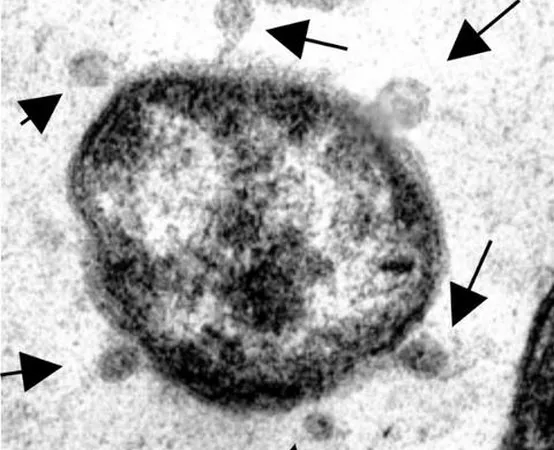New research affirms a unique peptide found in an Australian plant can destroy the No. 1 killer of citrus trees worldwide and help prevent infection.
Huanglongbing, HLB, or citrus greening has multiple names, but one ultimate result: bitter and worthless citrus fruits. It has wiped out citrus orchards across the globe, causing billions in annual production losses.
All commercially important citrus varieties are susceptible to it, and there is no effective tool to treat HLB-positive trees, or to prevent new infections.
However, new UC Riverside research shows that a naturally occurring peptide found in HLB-tolerant citrus relatives, such as Australian finger lime, can not only kill the bacteria that causes the disease, it can also activate the plant’s own immune system to inhibit new HLB infection. Few treatments can do both.
Research demonstrating the effectiveness of the peptide in greenhouse experiments has just been published in the Proceedings of the National Academy of Sciences.
The disease is caused by a bacterium called CLas that is transmitted to trees by a flying insect. One of the most effective ways to treat it may be through the use of this antimicrobial peptide found in Australian finger lime, a fruit that is a close relative of citrus plants.
 Arrows point to areas of fluid leakage from the bacterial cell after treatment with the antimicrobial peptide. (Hailing Jin/UCR)
Arrows point to areas of fluid leakage from the bacterial cell after treatment with the antimicrobial peptide. (Hailing Jin/UCR)
“The peptide’s corkscrew-like helix structure can quickly puncture the bacterium, causing it to leak fluid and die within half an hour, much faster than antibiotics,” explained Hailing Jin, the UCR geneticist who led the research.
When the research team injected the peptide into plants already sick with HLB, the plants survived and grew healthy new shoots. Infected plants that went untreated became sicker and some eventually died.
Researchers also identified that one half of the peptide’s helix structure is responsible for most of its antimicrobial activity. Since it is only necessary to synthesize half the peptide, this is likely to reduce the cost of large-scale manufacturing.
The SAMP technology has already been licensed by Invaio Sciences, whose proprietary injection technology will further enhance the treatment.
Following the successful greenhouse experiments, the researchers have started field tests of the peptides in Florida. They are also studying whether the peptide can inhibit diseases caused by the same family of bacteria that affect other crops, such as potato and tomato.
“The potential for this discovery to solve such devastating problems with our food supply is extremely exciting,” Jin said.
For more information:
Jules L. Bernstein
E-mail:jules.bernstein@ucr.edu
Tel.: +1 (951) 827-4580
